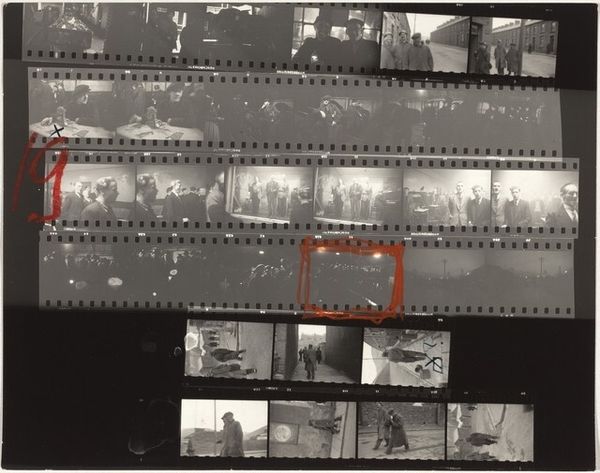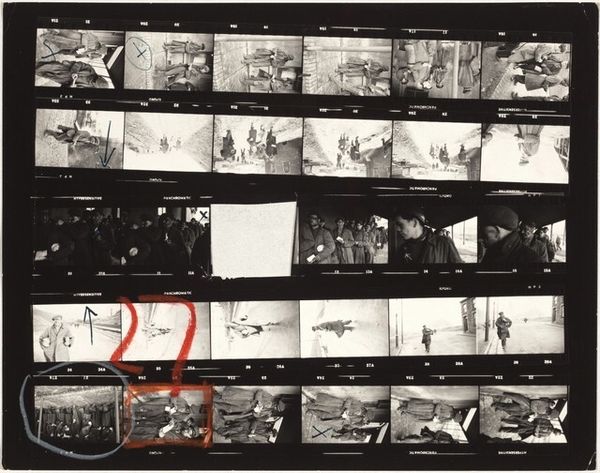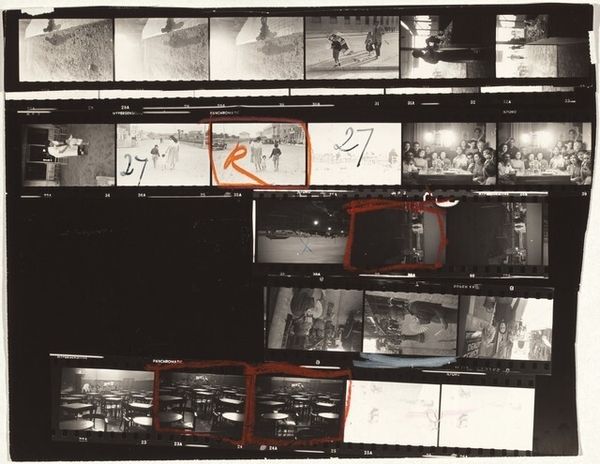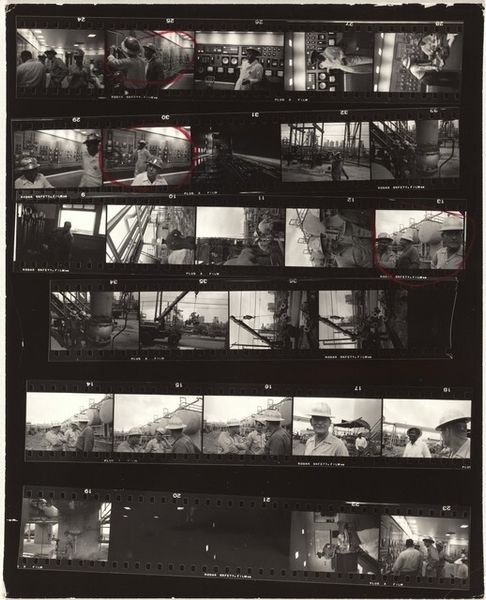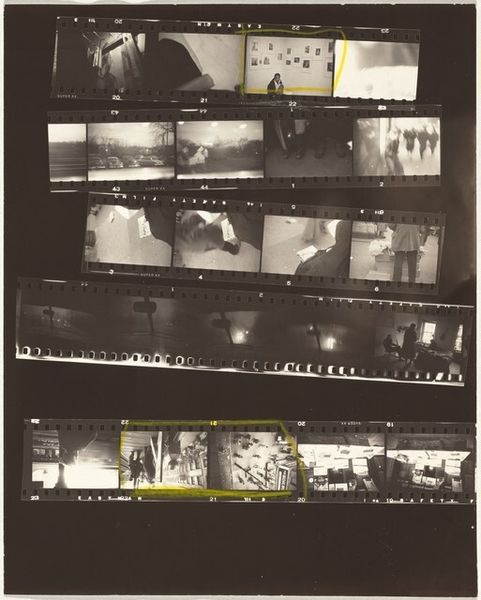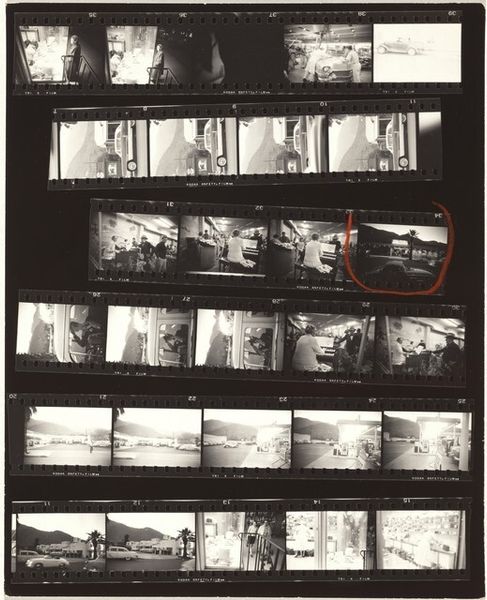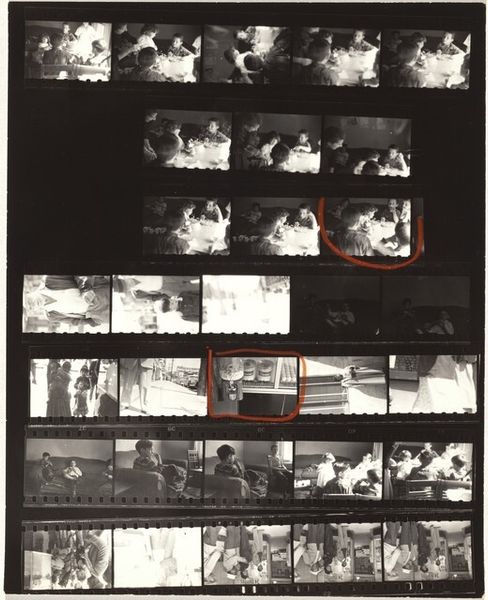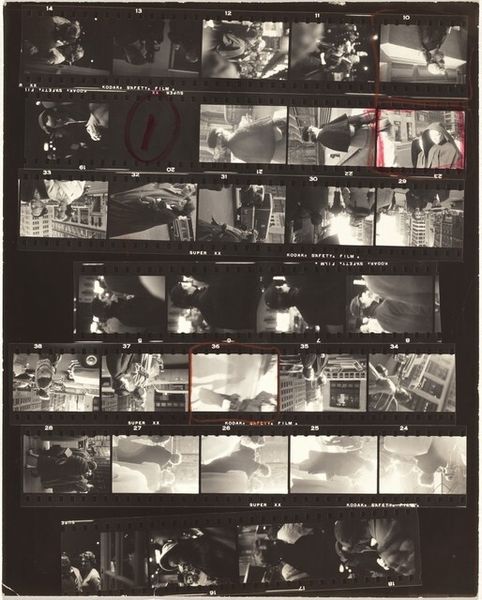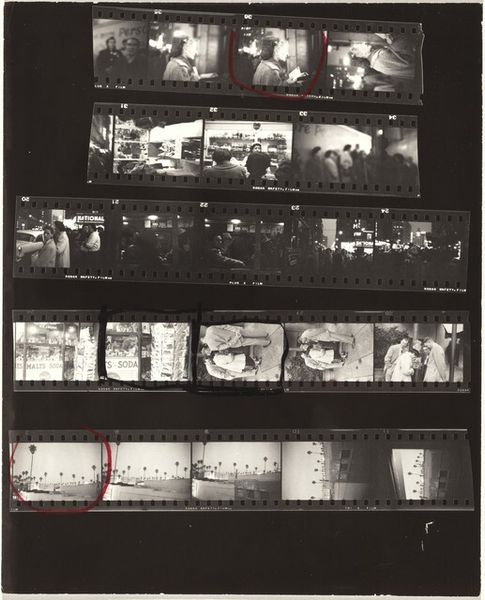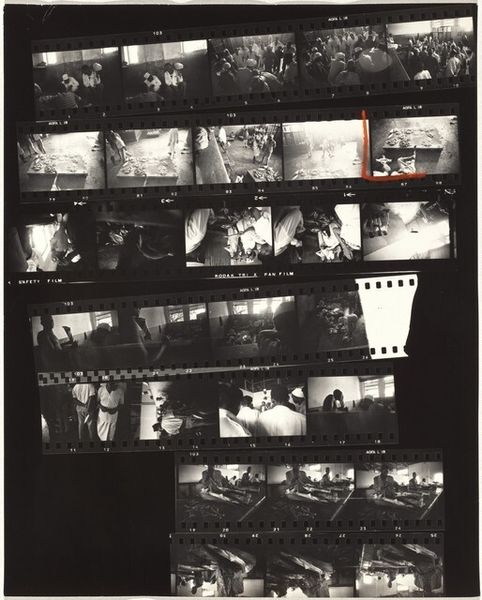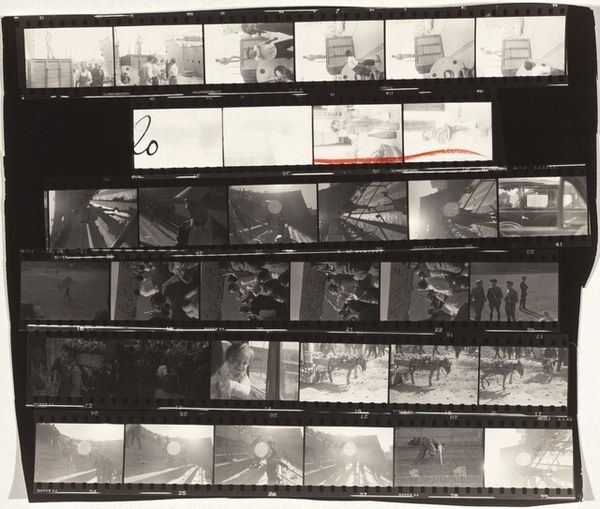
photography, gelatin-silver-print
#
portrait
#
film photography
#
outdoor photography
#
street-photography
#
photography
#
gelatin-silver-print
#
realism
Dimensions: overall: 20.2 x 25.7 cm (7 15/16 x 10 1/8 in.)
Copyright: National Gallery of Art: CC0 1.0
Curator: So, what jumps out at you as we look at Robert Frank’s "Wales 14" from 1953, printed as a gelatin silver print? Editor: An air of melancholy, definitely. Like a film reel strip from a lost story. The grayscale only amplifies that. What narrative threads were being considered, abandoned? I want to pull them all out! Curator: It’s fascinating, isn’t it? Seeing a photographer’s decision-making process laid bare. This particular image reveals Frank's journey to distill the essence of Welsh life into a sequence for possible publication. The visual vocabulary he uses… the bleak landscapes. Are those coal miners we see indoors, catching a moment’s respite? Editor: The collective and the individual, simultaneously. It also makes me think about film itself, how light etches fleeting moments into memory and how those selections impact our memories. Frank chooses the bleakness; therefore we interpret bleakness in Welsh lives at the time. There's symbolic weight in how figures are repeated—walking alone on that path above, seated, side-lit in a crowded space—repetition almost rituals. Curator: Precisely. The symbolic resonance deepens when considering how many images depict shadows. And I can’t help thinking of the tradition of Welsh poetry; how a sense of yearning is ever-present. The weight of history seems etched into those faces. It resonates so profoundly and it gives me chills. Editor: Yet I see stubborn defiance, too, in a couple of those portraits Frank singled out with an X in orange. The stark contrast, how they refuse to be entirely consumed by shadow, speaks to a refusal to be erased. The light of the exposure—maybe from a doorway, small window—isolates them, yes, but also almost… blesses them. I feel protective of them. Curator: The beauty of Frank’s eye is that he never tells the full story—only whispers fragments that invite endless contemplation. Like a melody that lingers long after the song has ended. It’s what gives the series it's haunting beauty. Editor: Exactly. These fragments make up a narrative with recurring archetypes and visual cues—ones you keep searching and reshuffling like pieces in a cryptic message that wants desperately to be decoded.
Comments
No comments
Be the first to comment and join the conversation on the ultimate creative platform.
